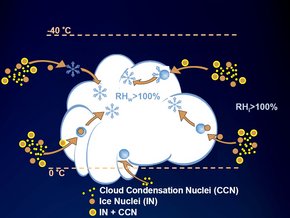
Clouds are the key element for the understanding of the global radiation budget. It is widely assumed that the formation of clouds are affected by anthropogenic emissions of trace gases and aerosols. These so-called indirect aerosol effects are regarded to be of major relevance for the full understanding of the climate system and the human affect on the latter. In adddition, the formation processes of clouds and precipiation and their interaction with aerosol particles are to date only weakly understood.
The experience of the working group of ground-based remote sensing in the characterization of aerosol properties in combination with new techniques for the remote-sensing of clouds allow to perform aerosol-cloud-interaction studies.
